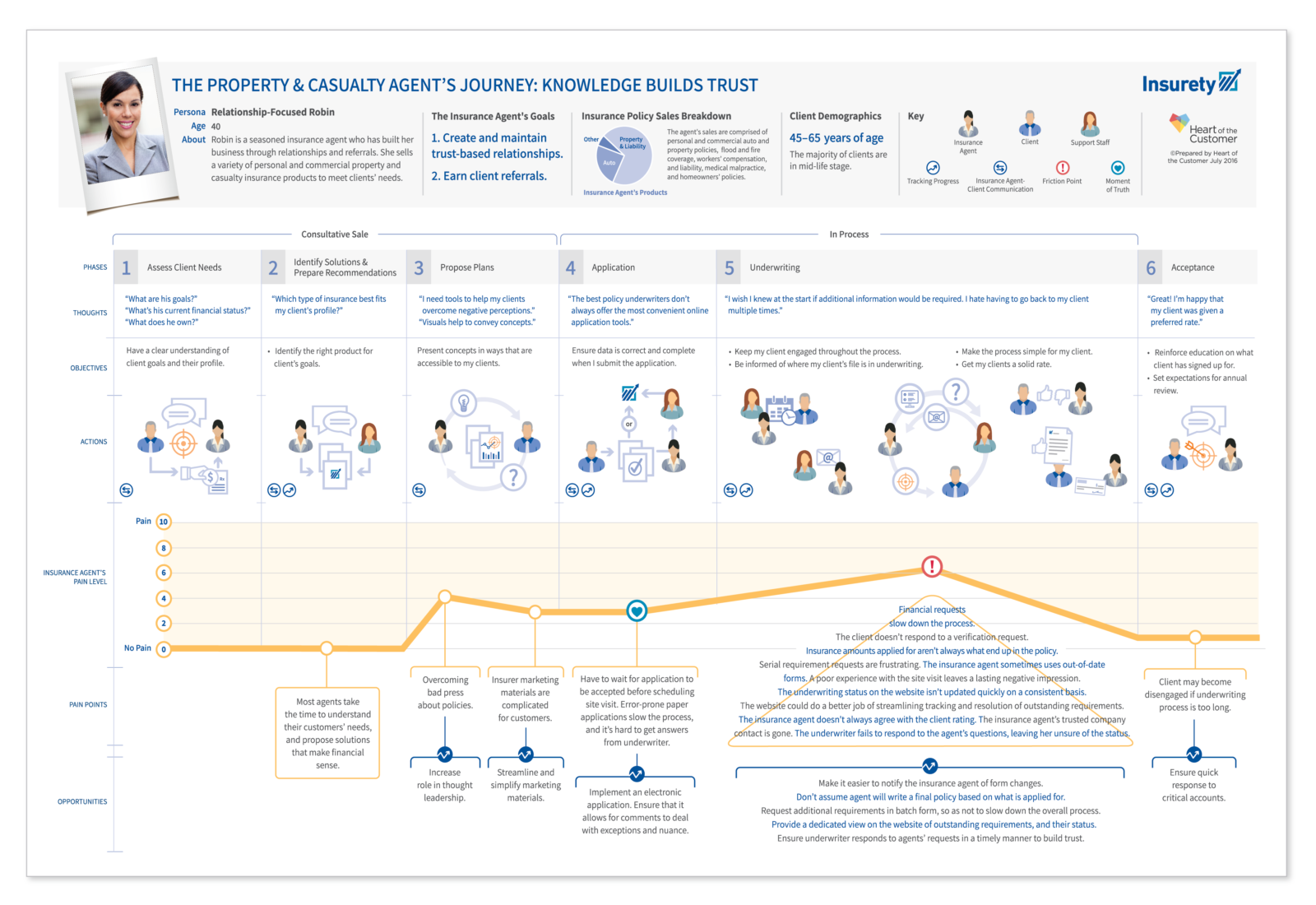There are a ton of journey mapping tools out there. I’m most familiar with Touchpoint Dashboard, but I’ve had demos from many others. They all excel at certain components of journey mapping, but they don’t (and probably can’t) address some of the largest problems.
That’s because the biggest reasons journey maps fail have nothing to do with digital problems; they’re analog. As we’ll discuss tomorrow, the biggest problem in journey mapping is that it’s done in silos. Small teams are created to do journey mapping. Those small teams intimately learn the customer experience, but because they don’t control the critical touch points, the effort fails to drive change.
While software can help make it easier to communicate, it’s still too difficult. Either the software requires participants to login to a unique system they’ve never used before, or the user has to manually export a PDF to share, which severely reduces the software’s functionality.
To be clear, most journey maps (including ours) are shared via PDFs. That defeats the point of the software, which usually isn’t solely designed to create a graphic display of the customer’s journey. It’s designed to allow multiple teams to input the journey, agree on its implications, and to combine it with internal information that is updated on a regular basis.
This latter part is the most interesting to me. Journey mapping software’s greatest potential is to display the impact of customer experience improvements on the journey. If you can identify both soft (survey) metrics and hard measurements that translate to your customer’s journey, the software can show those metrics and measurements along with the journey map, then track changes over time.
In the map below, it would be phenomenal if the software could show the map, then track relevant survey results and business KPIs, such as the average application turnaround time and percentage of paper applications called out in the fourth phase.
 By pairing the visual journey map with the data, you could reinforce the map that employees are already familiar with and track progress over time.
By pairing the visual journey map with the data, you could reinforce the map that employees are already familiar with and track progress over time.
Unfortunately, most software that can do this tracking have a proprietary visual format – typically involving grids and boxes – which isn’t actually very visual. There’s also still the requirement to go to a unique system, likely involving yet another password (plus lots of user licenses), which are all barriers to usage.
That’s why the journey mapping software of the future won’t be standalone systems like Touchpoint Dashboard or SuiteCX; they’ll be integrated into platforms such as Medallia’s. This will allow companies to integrate the journey map into the existing customer experience dashboards, increasing the functionality of both the maps and the dashboards. I did see a demo of Intouch Insight’s product CX platform, which allows you to build a view that shows your customer’s journey. This will eventually become the norm.
Software also doesn’t typically address the second most common journey mapping problem – that the map-making doesn’t involve customers. In fact, by making it easy to enter in whatever data you want, journey mapping software may inadvertently exacerbate this issue. The one exception I’ve seen is CX Workout, which integrates customers into your journey mapping. So far, I haven’t seen any others.
The current landscape of journey mapping tools is still immature and will certainly progress over time. That is, until they’re absorbed by the larger CX software products, which will greatly increase their functionality.
————-
This is the fourth of five posts of reflections after five years of journey mapping. All five will be:
- Journey mapping has become a must-have approach to customer experience.
- We still have challenges navigating the trade-offs in what we map.
- Too many see journey mapping as a workshop.
- Journey mapping tools still don’t address the most critical challenges.
- Journey mapping is still happening in silos.
These all reflect, to varying degrees, the five journey mapping questions that you should consider before embarking on a project:
- What is the business problem or opportunity?
- What is the right journey to map?
- Who is the right customer to map?
- What is the right approach to bring the voice of your customer to life?
- Who should be on your journey mapping team?
Please, join in the discussion by leaving your comments on our blog, or on LinkedIn.



